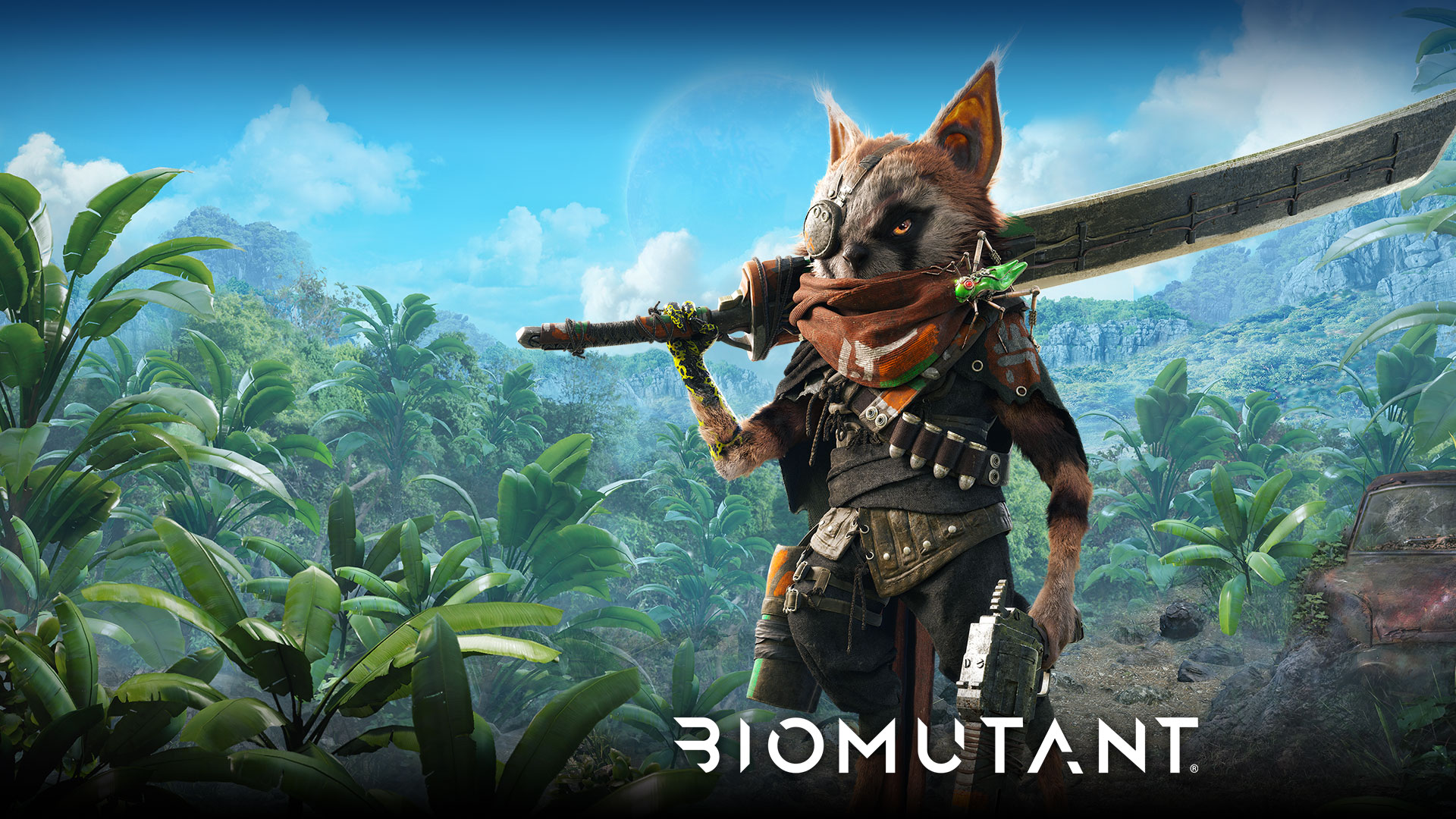There’s something undeniably wonderful about the concept of a game that unapologetically combines the animal protagonists you might expect in a platformer, with an openworld RPG full of crafting and side quests. Biomutant feels like something Rare might have wished they’d done if they still had the same direction they did back in the 90s. I went in eyes wide with wonder.
Set in a post-post-apocalyptic world, further ahead even than Horizon Zero Dawn, Biomutant’s creatures have evolved from the toxic polluted hellhole that wiped out the last humans. Weapons are created from human scrap, items and clothes from old material, and the world is strewn with the metal skeletons of burnt out cars, chemical power plants and cracked roads. But as Jeff Goldblum would say, life finds a way.
Now the creatures are sentient, creating their own tribes, their own politics and wars, and also coming to grips with the dangerous monsters that have also evolved from humanity’s greed and mistakes. World Eaters threaten this new ecosystem, attacking and feeding off the Life Tree’s roots, and threatening its fragile future. It’s up to you, one lowly mammal (with some mean kung fu skills) to save the world.
So does Biomutant have what it takes to stand beside Horizon as a must-play post-apocalyptic RPG, or has it mutated into something completely different? We take a look deep into its DNA.
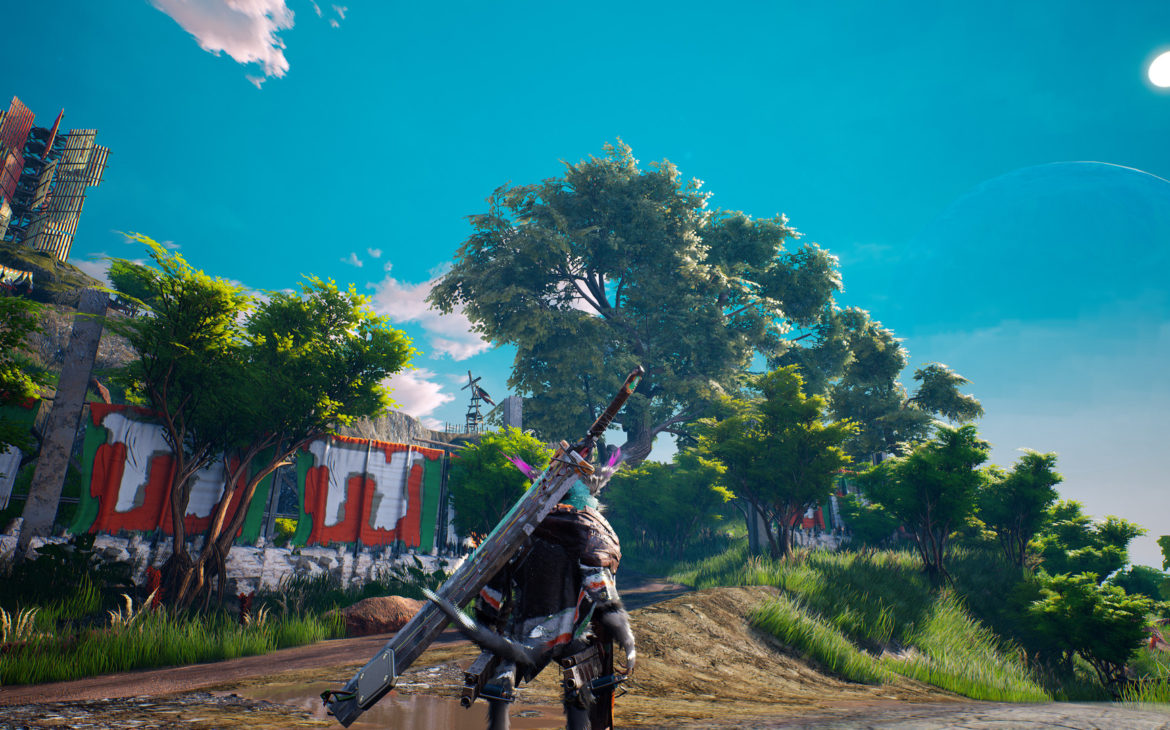
The world has moved on from the time when humans lived. Think of Horizon Zero Dawn’s post-post-apocalypse, but if the humans really did die out and the remaining rodents and mammals evolved for a few tens of thousands of years. Humans left such a blight on the world, so much poison, toxic muck and shit, that mutations are common, and rodents have sprung up to fill the evolutionary gap left by their primate cousins. That sense of a world far beyond anything human, and yet still reeling from the utter mess we made of it, is poignant but also bludgeoned home like a scrap-crafted hammer to the cranium.
There’s a tree of life at the centre of the world map with four huge tentacle-like roots that splay out from it to the four corners of Biomutant’s world. This tree of life began to die when the ‘end of days’ began, and monsters arrived. At the end of each root is one of the game’s four main bosses, the World Eaters, all named Jumbo Puff or Candi Puff, just to make them seem extra scary.
It’s very ecologically minded as a game, something that appeals to me massively. The entire premise, the post-post-apocalypse world, the backstory of toxic spills mutating the natural world, and nature overthrowing humanity. The Ori-esque quest to restore a broken world and heal the tree of life. It’s encoded into every strand of the game’s DNA, from mutations in character creation, to the narrative, to the world, to the constant upcycling.
You start Biomutant like Fallout 3 in Bunker 101, a sort of extended tutorial, learning the ropes of combat and stats, upgrades and items, while simultaneously being narrated the premise of the game. There’s an extensive character creator, which I’ll cover in a moment. You emerge into a world that needs you. Your main quest is to take down the World Eaters, but to do this you will need to find and befriend dozens of other anthro characters who can help you find resources, to construct in many cases a machine that will help you traverse inhospitable areas, or is specifically designed to aid you with the bosses. The first few hours as you emerge from the bunker are really wonderful and that sense of scale and uniqueness permeates the early game’s world.
However from this point on the game is rarely concerned with plot. There’s a tiny backstory of your character, learning kung fu from their mother, and seeing their town destroyed by a tyrant monster. But after possibly two flashbacks, it’s almost never referred to again. Most characters you meet are just quest-giving villagers or mechanics, none that you could argue actually change the plot or add any real urgency or twists or turns. There is an amazing premise, explained a number of times, but there is little in the way of development beyond that.
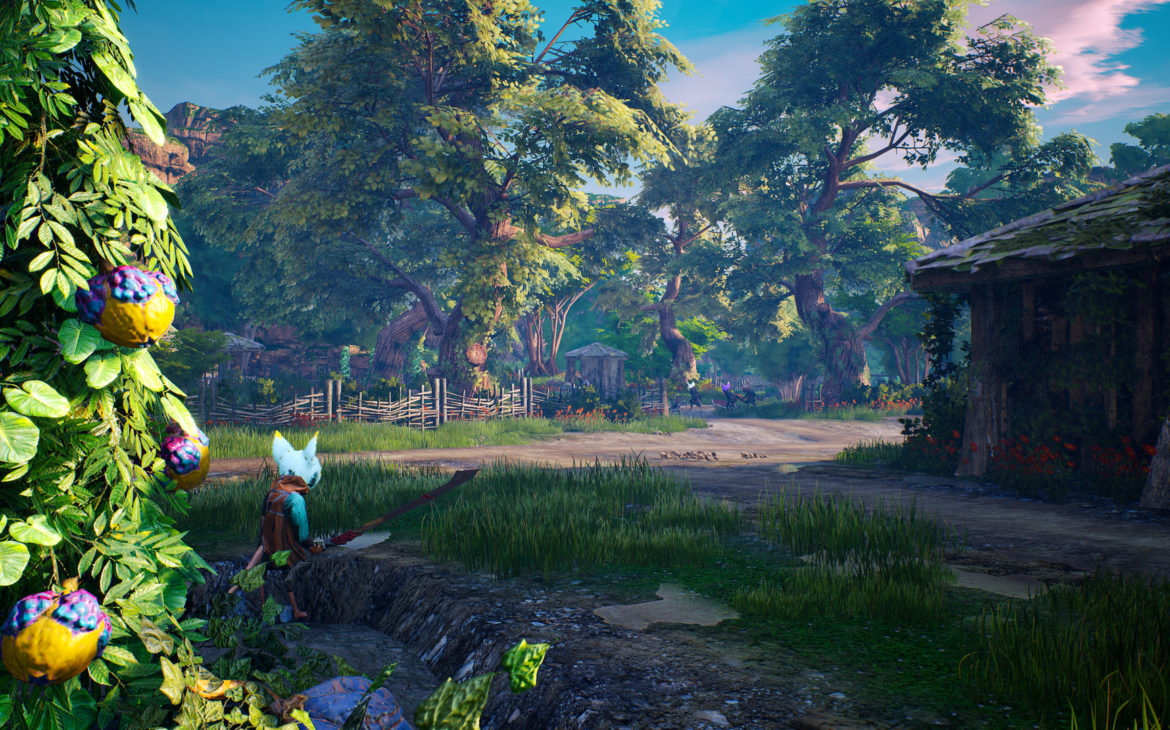
Voiceover can be divisive – take Blade Runner and Harrison Ford’s voiceover for Deckard – panned by critics, loved by many fans. The entirety (and I really mean entirety) of Biomutant is narrated by David Shaw-Parker, whose credits include Horizon, Shadow Tactics, and a few of the Warhammer Vermintide games. He sounds like a gruff Stephen Fry as he narrates the tutorial, the world itself, you walking down a road, you entering a new area, every line of dialogue from every character in the entire game. Yes, it’s all the narrator, every single line. Now, don’t get me wrong, the narration is evocative and well done; it really brings the world of Biomutant to life. There’s just far, far, far too much of it. I just wanted it to stop so I could explore. I can see the argument that without it, the animals would have had to speak dead human languages, or been subtitled, and the cost of far more actors might have been prohibitive. But I still would have done without it.
To add insult to injury, the narration is often gibberish as well. The narrator is a small automaton that travels with you, trying to translate the citizens of Biomutant’s world. But the languages of the animals are gibberish, and a lot of words don’t translate. It’s fairly common to hear him speak for minutes at a time without really having a clue what was actually communicated. Here’s a basic example; Gulp of the Sinkidink wants a Bulletspinno Pjupejector to catch GumQuacks, in the hereafter. Reading it you can tease out the meaning, but without subtitles sentences like that can go right over your head.
Within a few hours (minutes if you really can’t cope) you will probably do what I did and resort to a slider in the settings menu to minimise narration. It can’t be turned off completely, but on minimum it’s at least manageable.
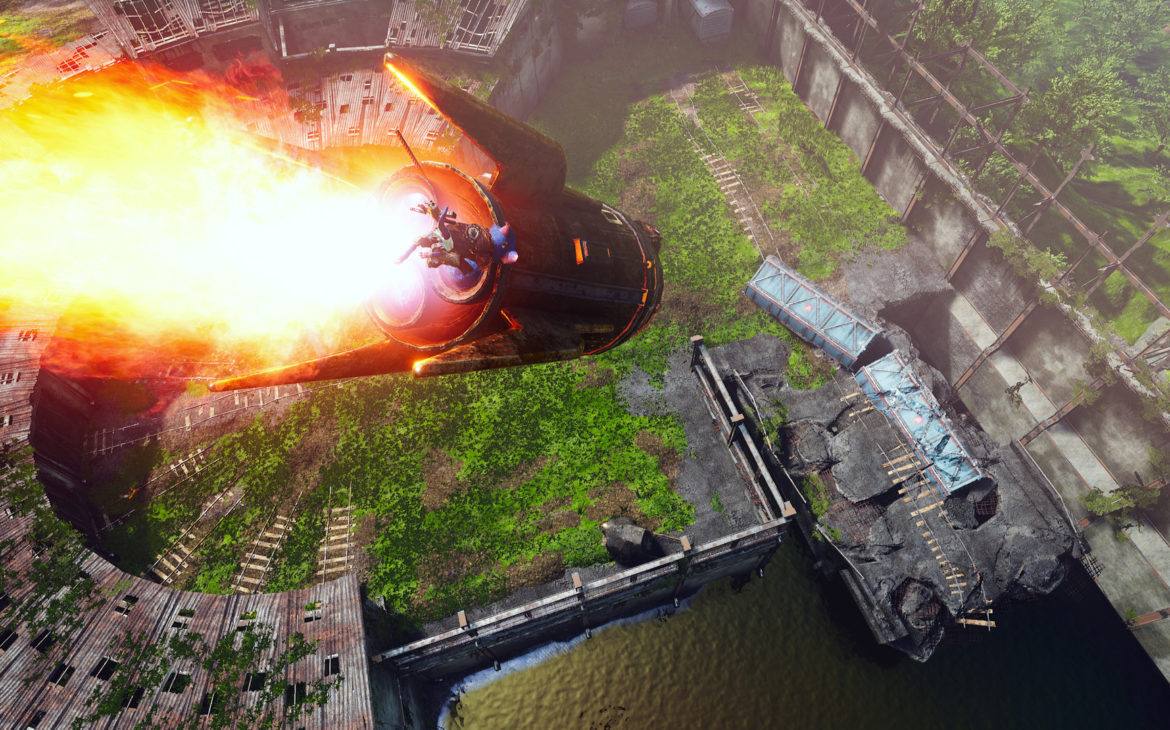
If you are anything like me a character creator at the start of any game can take you a good half hour. In Biomutant, it’ll take even longer. Biomutant’s marketing may have heavily featured a ginger raccoon doing Kung Fu, but you have masses of control over the critter you create – I’d be surprised if you stuck with the default.
You start with breed; six ugly-ass rodents to choose from. But this doesn’t illustrate what the system can do. Then comes DNA. You start splicing around the DNA options, which shares out and decreases your stats, and your rodent starts morphing into hundreds of different shapes. It’s not just size and weight, but build, ear placement, the shape and detail of their snout and tail; things I’ve never had to consider in a character creator before. You’ll be forgiven for picking one than is aesthetically pleasing rather than the rough looking bruisers, but this will come at a loss in strength and vitality.
Then to make things more complex, there’s what resistances you have, what fur patterns, what colours for your primary and secondary pattern, and finally your class, which will change your creature again completely. I had to go back and forth through these choices multiple times. Classes range from Dead-Eye, with rifles and gun perks, to Psi-Freak with Hadouken powers, Sentinel with extra armour, and Saboteur with dual-wielding from the start. It’s a great system, and there’s a enormous amount of potential in it. It ties in with the premise of the moved-on mutated world. These rodents are evolving from the DNA-mutating chemical spills we left behind, and it’s written into their faces, fur and tails.
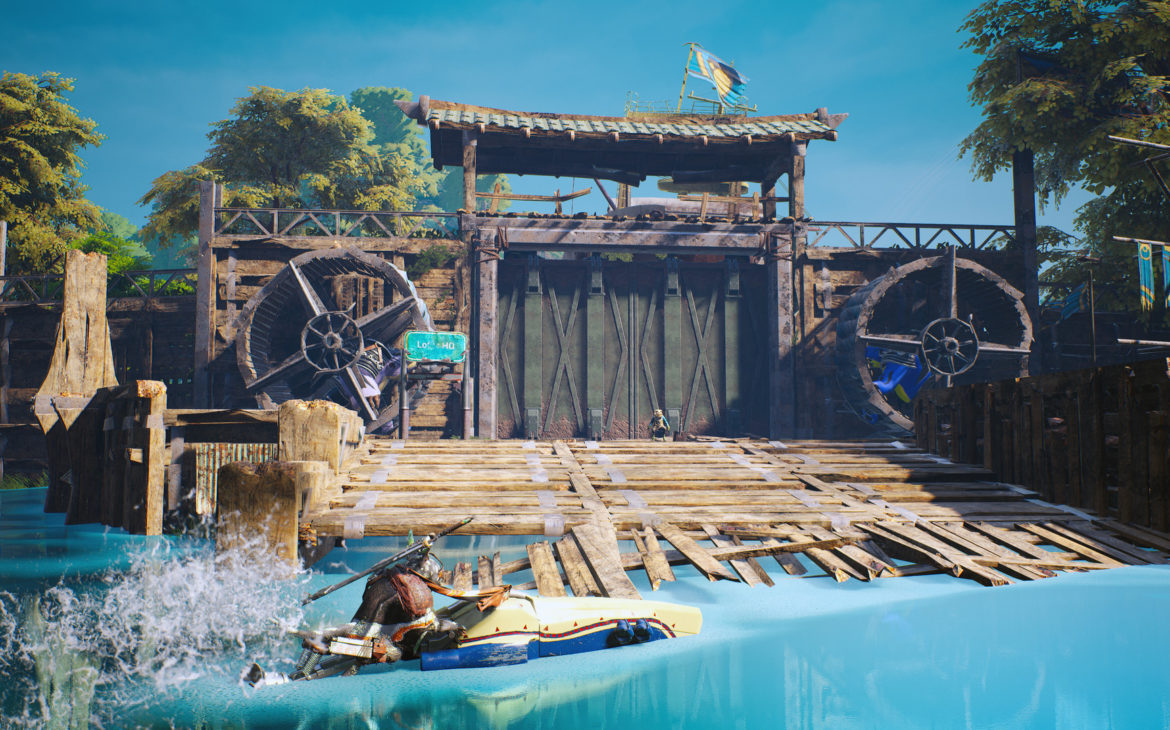
The beginning of Biomutant is an absolute onslaught of narration, difficult names and titles, and a hundred concepts and tutorials to listen to and read. It’s a little daunting and confusing, but thankfully the game continues to explain these concepts for some time after, letting you get everything clear in your head. There are fun little details like peeing on signposts to mark territory you’ve discovered and creating a fast travel point, or the ability to sprint on all fours. Deadzones and toxic areas are done well, having you able to survive for a short period, which can be extended with mutations, or the use of large machines such as the Mekton, a bipedal robot you can pilot, or the cool jetski. There’s a minigame used maybe a hundred times where you have to line up switches to use old technology and open safes or tun on old generators, which gets old really fast.
However for the most part gameplay can be loosely broken down into the exploration/looting/crafting loop, combat, and morality choices.
Let’s take them in order. Without much abundance of plot, side questing takes up the bulk of the game’s content. Almost every village, dungeon or character you meet will have some issue they need resolved, and you are the only one who could possibly help. Lose yourself in helping strangers, because there’s not much else to do. Many of these quests lead you nicely to new locales and a fight of some kind, plenty of loot to pillage and often something special and rare. With the item parts and resources you find, you can craft weapons, augment your clothing and add damage dealing additions to everything.
The trouble with this system is it gives too much with one hand and not enough with the other. You will have hundreds maybe even thousands of pieces of clothing and armour by the time you reach the end game, 99% of which was lower level, lower stat or just plain ugly, and you never equipped. On the other hand there’s never enough crafting resources to actually make more than a couple of things. You are forced to be exceptionally frugal with your crafting, which means you hardly use the system. Once you have a half-decent weapon you’ll likely use it for many many hours, because the cost of another is not viable for many hours to come. And because things generally only make a few digits difference in damage stats, you’re almost always looking for the cheapest resource cost, not the best. This discourages experimentation and meant for me, the crafting system and all it’s intended freedom, went almost unused.
Biomutant loses itself and the goodwill it generates in a massive collectathon of millions of pointless items. In an area of level 20 odd enemies, why does every treasure chest have clothes and items that are level ten – I’m never going to wear these! It’s too late! Though it makes sense from an armour perspective, why design every item with the highest armour stats cover up my lovingly created creature to the point I cannot even see them?
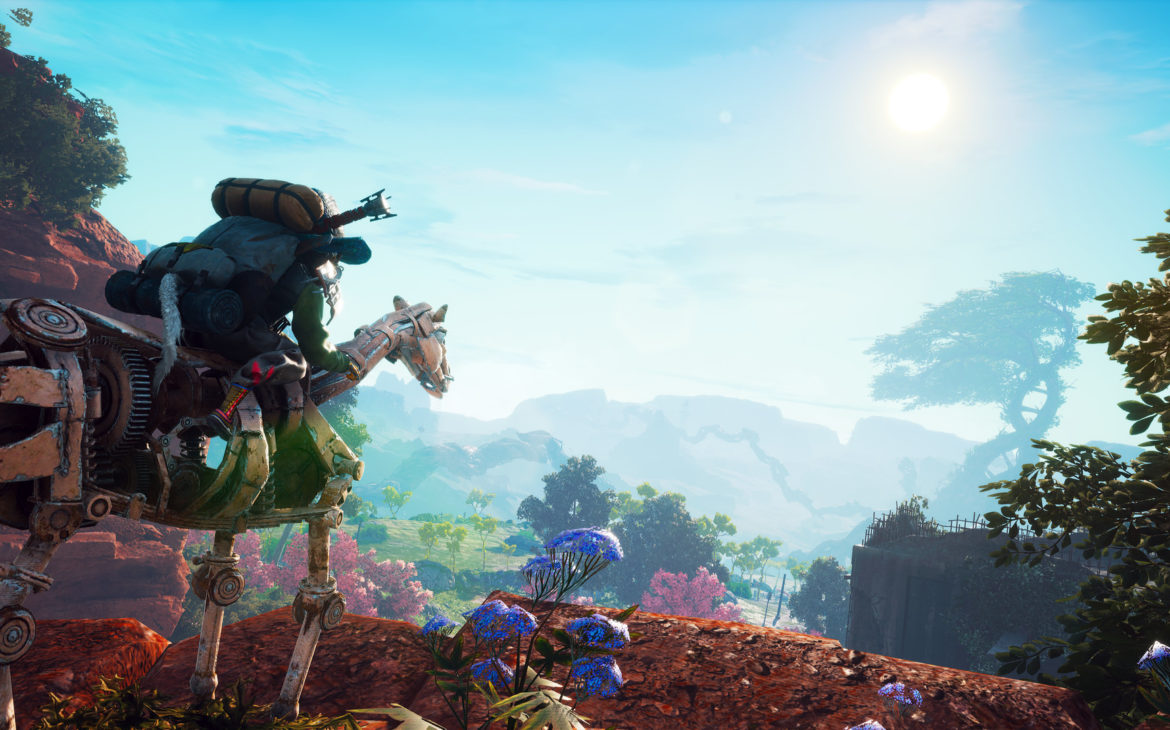
Let’s talk combat. One of the first main quests is to ally yourself with one of six tribes and their Sifu, the chieftain, who either wants help to subjugate all the other tribes for the good of the life tree, or for the power to destroy it. We’ll cover the morality system in a moment, but depending on your state of mind, you’ll ally as you see fit. The gameplay result is the same – dozens and dozens of missions to take over enemy bases Far Cry-style and bring them under your Sifu’s control. I really enjoyed the territory-adding feature – it reminded me of AC:Syndicate or Grand Theft Auto San Andreas.
Combat forms the bulk of how you deal with tribe bases, dungeons, and the end of most side quests. You have normal attacks with your melee weapon, special finishers called Wung Fu moves and you can jump and dodge about like Dante from Devil May Cry. You can also shoot with one or two guns, from pistols to rifles, shotguns, boomerangs and flamethrowers. Also like Dante. Many moves can be bought with upgrade points as you level up, and they string together to stun and bludgeon the enemies into submission.
You also have a parry button on the left shoulder, but don’t think Dark Souls – it’s nothing like it. It’s a sort of counter button, that if you time it right, will interrupt the enemy’s move and allow you to stun them and chain an attack off them. You can get into a good rhythm with the parry, where it’s easy to punish enemies for attacking you, and it’s very useful on the larger enemies with lots more health.
That all sounds okay, and for the most part it is. But combat in Biomutant suffers in a few places, primarily the camera and lock on. In that way it’s a lot like the old Rare games I mentioned at the start. You have a kind of auto-aim when firing your guns, so most bullets find the fur, but that’s about it. The passive lock-on that helps you target each enemy with melee attacks barely does its job, and the moment you start dodging and running out of the way of flying rocks, or ranged attacks, you lose it. You cannot fix a lock-on to a chosen enemy.
In large bosses, or group attacks, this combines with a camera that seems to not realise you might want to look at the action, and means if you are circling an enemy boss, you are fighting to control the camera as well as losing the ability to lock-on. Makes dodging rather difficult. The lack of a lock-on is very detrimental to the enjoyment of the combat throughout the game, and considering its modelled on Devil May Cry and possibly the last decade of Souls games, it’s a strange omission.
Let’s just skip back to the tribes and their subjugation. After 10-20 hours you’ll probably have subdued a few tribes. If taking on three more rival tribes, base by base, starts to grow stale (and let’s face it, it really does), at the point you complete the second tribe, Biomutant gives you the opportunity to throw the towel in. To skip to the good bit. Would you like to skip ahead to when all the tribes have surrendered? Do so and you will forgo the chance to get all the tribe weapons, and probably quite a lot of EXP, but you also won’t have to do the same tribe base section a dozen times over. I feel like the developers knew that this gameplay loop was getting boring and added this frankly bizarre skip function.
Lastly let’s talk morality. A lot of Biomutant is preoccupied with your moral choices, presenting you with literally hundreds of binary choices across your playthrough. From macro choices like which tribes to support, to micro ones like which way a side quest goes, you are constantly asked to test your motives and either help or hinder, pursue power and darkness, or freedom, loyalty and light. I’m not sure if dozens of black and white choices eventually paints a picture of greys, but that seems the impression it wants to give. You can pursue all dark or all light, but most will make a few of each decision along the way.
I think if I had designed it, and been this concerned with morals, I might have preferred to present both sides but without labels and clear signposting, and let the player decide the lesser of two evils perhaps, or which out of two creatures to save, like Joker presenting Batman with unwinnable situations. Instead Biomutant labels everything even to the point of having a tiny black demon and a tiny white angel who come out and berate you for your choices. It’s too simplistic considering the pains the game goes to presenting a moral framework.
In some cases I wanted to pursue power in order to get strong enough to save the tree of life, not to be powerful in order to subjugate others, but in Biomutant’s world view that not possible. Power corrupts. Instead of feeling like I had choices, I felt constrained to perform in a certain manner. The game often presents you with a fork in the road, one way is dark the other is light, but I ended up just frustrated I couldn’t explore every part of the world.
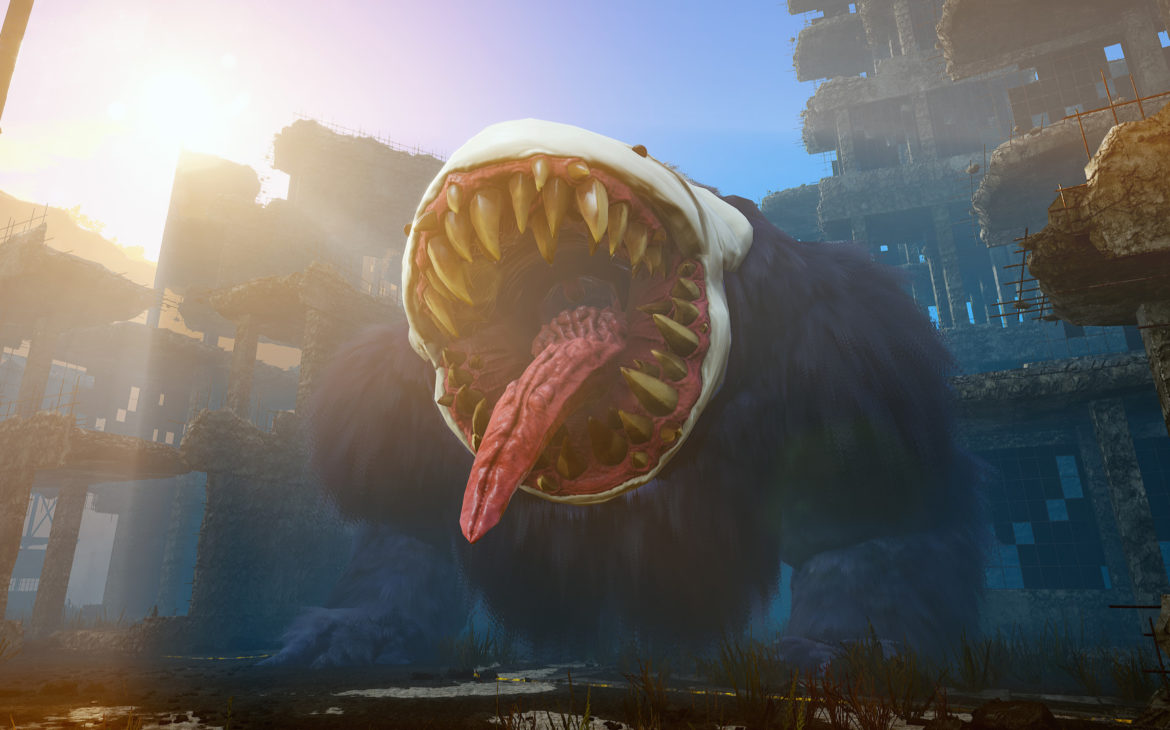
The world of Biomutant is its greatest asset, displaying wonderful vistas, landmarks and places I haven’t experienced in other open-world games, like the tangled tree roots dominating the skyline, or the toxic deadzones. Lighting is done really well and gives a great night and day cycle, with realistic shadow movement. However when you move the camera in close, Biomutant can feel distinctly last-gen early PS4 and Xbox One era. The fur on most of the creatures is treated with that fuzzy texturing that also makes it not look real. I was playing on an Xbox One so it’s possible the Next Gen editions will be better, but graphically Biomutant is not up at the top of the food chain.
There are a number of nice musical themes that will follow you throughout your exploration of the world, some of which are catchy and memorable. Sound in general is done well, but as mentioned earlier, it suffers a lot from being full of gibberish languages and a massive over-reliance on narration. This combo contributes to a game where you almost want to turn the sound off.
Biomutant also has a fair number of glitches. From vaguely annoying choppy framerates or the game freezing for a second before resuming, to game breaking crashes that occurred on average every 5 or so hours. On Xbox One the game crashed about 8 times during my first 30 or so hours, often when I died and it was trying to reload it would boot me out to the Xbox home screen. On one occasion this was when I had beaten a boss, and the game had not yet autosaved – meaning I lost the progress of besting my first World Eater.
I encountered invisible walls and obstructions, which were fun because little furry man would do a kind of mime-in-a-box impression against the invisible walls. I often lost the contents of one of the quick access wheels, all my health items gone, for example. Sometimes they were gone but still usable, just the icons missing. My personal favourite was when everything green in the world turned bright scarlet red – Biomutant is a pretty green world, but it became the pits of a fiery burning hell until I decided to reload.
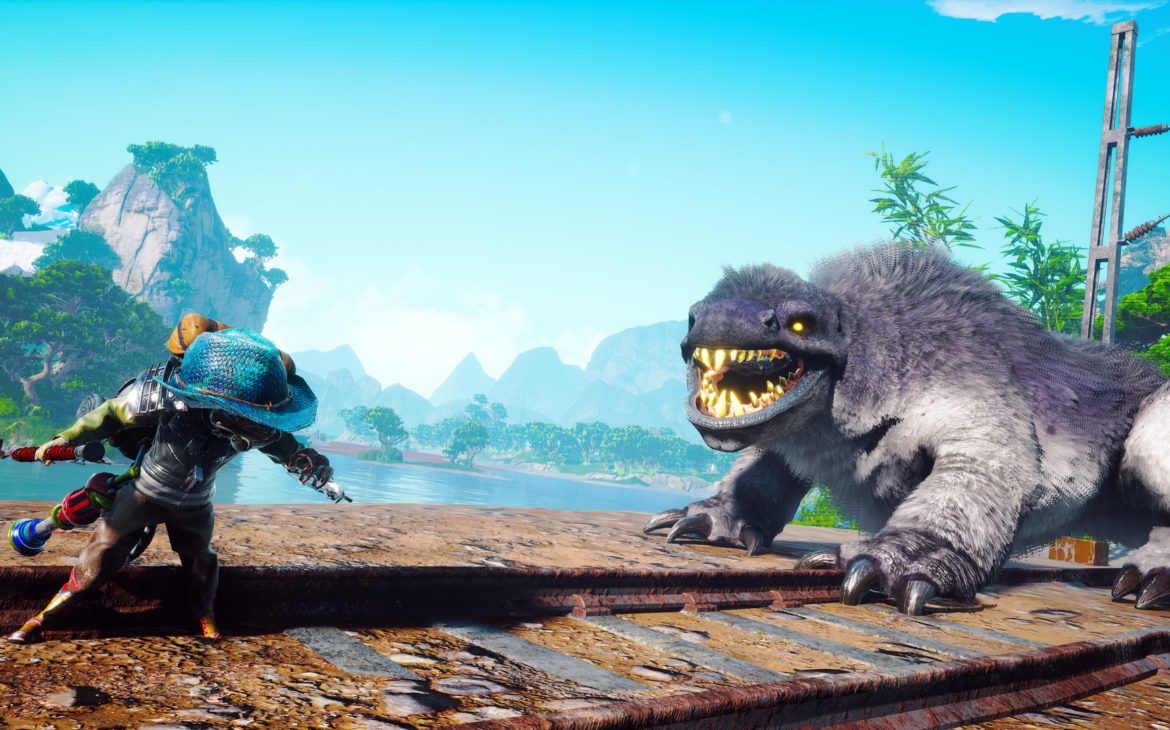
As the only real animal-based open-world game, a world built for animals and full of animal-based ideas, Biomutant is wonderful and unique and our world is better for its existence. However as a competitor against other open-world titles, it’s lacking in polish, and is full of superfluous systems, while lacking some it actually needs like a lock-on. It’s a massive item collectathon, where hardly any item is worth picking up, or is fed to you at the wrong times.
Ultimately there’s no real plot at all. Biomutant sets up a world and a hell of a lot of things to do, but they are all side quests. Even things labelled as main quests feel like side quests, and the ultimate goal of ridding the world of four World Eaters left me wishing there was something, anything to hang a plot from. The tiny attempt at a few replayable memories are hamstrung by the narration, and the lack of any consequence whatsoever.
Its morality system falls into the same pitfalls as many games – being far too binary in choices and placing far too much emphasis on this mechanic. At the same time, the morality meter barely has any consequence to it, and after about 10 hours you’ll realise it doesn’t matter to your game at all.
Biomutant was announced a long time ago, and has been subject to delays, primarily due to it being a large open-world created by a small team. In retrospect, despite this being a laudable goal, maybe time would have been better spent halving the size of the world, and concentrating instead on plot, story, consequence, and an item and crafting mechanic that actually rewarded the player with items worth having.
Biomutant is an ambitious animal populated open-world with so much to do most players could spend 60-70 hours exploring without seeing everything. However, size is its downfall. The player will get lost, and bogged down in the morass of thousands of side quests, thousands of superfluous items, before they realise there’s not much plot to hang it all from. Add a number of glitches at launch, no lock-on in combat, and a narrator that will drive many players to distraction, and sadly Biomutant does not live up to its lofty ambitions.

Biomutant is available on Xbox One (review platform), Xbox Series S/X, PS4 and PS5 and PC via Steam.
Developer: Experiment 101
Publisher: THQ Nordic
Disclaimer: In order to complete this preview, we were provided with a promotional copy of the game. For our full review policy, please go here.
If you enjoyed this article or any more of our content, please consider our Patreon.
Make sure to follow Finger Guns on our social channels – Twitter, Facebook, Twitch, Spotify or Apple Podcasts – to keep up to date on our news, reviews and features
